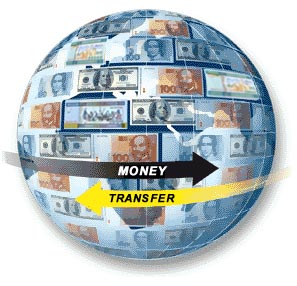While it has been estimated that the amount of worldwide remittances is around $300 billion, the amount sent home to Latin America and the Caribbean rose to $61 billion last year. Remittances remain a major source of income for many countries in this region. In several of the smaller and poorer nations, they far exceed external aid and net foreign direct investment.
This in from the Inter-American Development Bank.
MIF’s annual analysis of migrants’ money transfers shows year-on-year growth of 6%
Latin American and Caribbean migrants sent $61 billion in remittances to their home countries last year, up 6 percent from $57.6 billion in 2010, according to a report released today by the Multilateral Investment Fund (MIF), a member of the Inter-American Development Bank group.
Last year’s increase confirmed the upward trend in migrants’ money transfers that started in mid-2010, after the double digit drop in remittances recorded in 2009 as a result of the economic crisis. In 2011, nearly every country in this region received a greater dollar amount in remittances than the previous year.
“For the remittance market in Latin America and the Caribbean, 2011 was a year of renewed growth after the 2008-2010 period, despite persistent economic uncertainty in Europe,” the report noted. For 2012, the MIF expects remittances to this region to grow at a similar rate as last year.
Most of the money continued to be sent from traditional host countries such as the United States and Western Europe. In the United States, source of about three-quarters of remittances to Latin America and the Caribbean, foreign workers saw improving employment and wage levels. As a consequence, migrants made more transfers for higher amounts than the previous year.
In contrast, uncertain employment prospects in Europe resulted in drops in remittance flows to Latin America in the fourth quarter of 2011. In the case of Spain, the migrant population shrank by as much as 2 percent last year, as foreign workers (particularly men who lost jobs in the construction industry) left that country.
Brazil was the only Latin American country that registered a drop in remittances received in 2011, measured in nominal terms. These flows dipped nearly 5 percent to about $2.0 billion.
In contrast migrant transfers to Brazil – typically one-off transactions made when foreign workers decide to return to their countries of origin – jumped 51 percent to $2.1 billion, and for the first time exceeded workers’ remittances to that country.
This recent trend has led the MIF to adopt a narrower definition of remittances to Brazil, which considers only the money sent home by migrants living abroad for extended periods and leaves out other flows such as migrant transfers and the money sent home by temporary workers.
Currency fluctuations and inflation also affected the value of the money sent home by expatriate workers. Last year Mexican migrants sent home $22.7 billion, which adjusted for inflation and currency variations were worth 17.5 percent more in pesos. In contrast, migrant remittances to Brazil were worth 15 percent less when expressed in reais, the local currency, and adjusted for inflation.
“The importance of these flows lies in the vital role they play for millions of recipient families that depend on remittances for basic needs, even in countries with higher GDP levels,” the report noted. “In the absence of this regular source of income that these families receive from their family members abroad, many would fall below the poverty line.”
In recent years, as regional economies improved, remittances have become a smaller share of gross domestic product. In several countries, however, remittances are still more than 10 percent of GDP. In Haiti, which last year received nearly $2.1 billion, they represented more than one quarter of the national income.
The MIF and remittances
The Multilateral Investment Fund started analyzing remittances in the year 2000 to gauge their volume and economic impact in Latin America and the Caribbean. Its work promoted greater competition among service providers, which led to dramatic reductions in the costs of transferring money for migrants and their families. MIF projects have also sought to leverage remittances to increase low-income households’ access to formal financial services such as savings accounts, insurance and mortgages.
Source: Inter-American Development Bank
Here are the numbers on world wide remittances.

